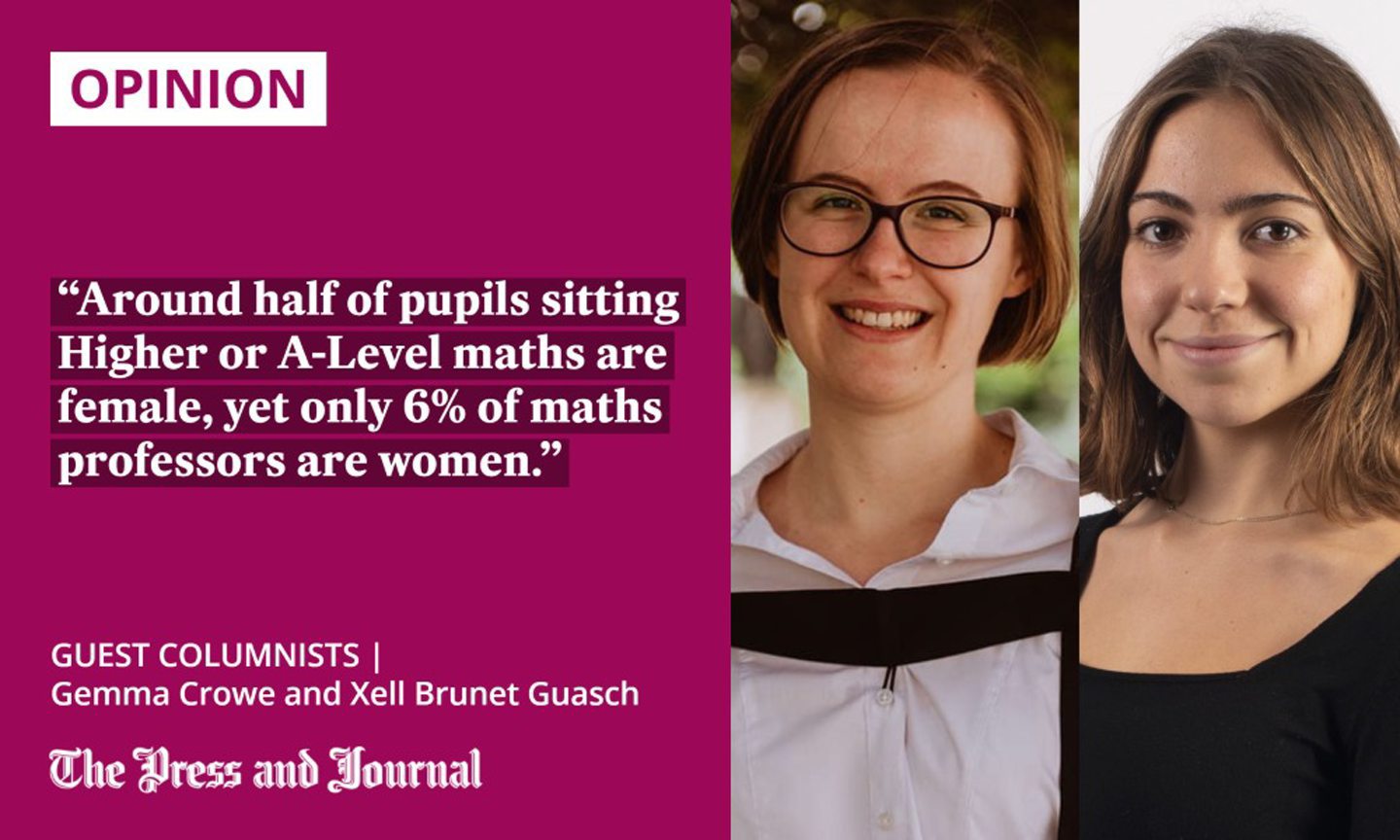We’ll be celebrating women in maths today by delivering cake to our colleagues at Edinburgh and Heriot-Watt universities, where we are studying PhDs in maths.
Of course, the added ingredient will be maths. If we want to share the cake evenly with eight colleagues, what are the minimal number of cuts required to ensure everyone gets a fair share? We’ll answer that at the end.
Baking is an excellent example of how we all use maths in our everyday lives. Weighing and measuring, perfecting the ratio of ingredients and timing the bake are all mathematical processes. An algorithm is really just a fancy word for a recipe.
But, for too long, baking has sat comfortably in a perceived female sphere of expertise, while maths has been seen as something best suited to male brains. That’s nonsense.
Women in Maths Day is marked on May 12 because it is the birthday of Maryam Mirzakhani, an Iranian mathematician every bit as brilliant as her male peers. She was awarded the Fields Medal – the maths equivalent of a Nobel prize – in 2014, but she died aged 40 from cancer in 2017. It’s hard to imagine her amazing and ultimately tragic story would not have been made into a Hollywood movie already, had she been a man.

Elena Piscopia is another woman too often overlooked by history. She was the first to be awarded a PhD, back in 1678, in Venice. Her trailblazing inspired three female PhD students in maths to set up The Piscopia Initiative in 2019. It aims to encourage more women to pursue study in the mathematical sciences, and to support those already doing PhDs, like us.
Women need support because, too often, we come up against ingrained prejudices and sexist attitudes. Sexual harassment happens and, with too few women in the upper reaches of academia, victims may have to report it to someone they are uncomfortable talking to. We’ve lost count of the number of times we’ve been ignored or talked over, or have run into everyday sexism.
And we need more women in the mathematical sciences because, currently, great swathes of female talent are going to waste. Around half of pupils sitting Higher or A-Level maths are female, yet only 6% of maths professors are women. That’s an appalling attrition rate.
It means that the very women who might hold the key to solving the climate crisis, cracking codes to keep the UK safe, or generating the next great leap forward in AI are being put off the very subject that underpins all those challenges, not due to any lack of ability, but in the face of outdated and damaging attitudes.
Acknowledge challenges and promote role models
Part of the solution lies in funding and maintaining maths departments, and we support the work of the Protect Pure Maths campaign – led by a woman, Professor Ulrike Tillmann – in making the case to governments on both those fronts. But, it also requires us to acknowledge the challenges female and non-binary mathematicians face, and to promote role models.
Women in Maths Day is an opportunity to do that, and to recognise that institutions and attitudes must change to accommodate a wider and more diverse pool of candidates and talent. And it’s an excuse to eat cake, of course.
The answer to the cake conundrum we set at the top of this article is: three cuts. First, cut the cake into quarters, using two perpendicular cuts through the centre. Then make a horizontal cut at half the height of the cake, which will give us eight equal pieces. Of course, you might want to consider a double layer cake, otherwise the bottom four slices won’t get any icing!
Gemma Crowe and Xell Brunet Guasch are joint leads at The Piscopia Initiative


Conversation